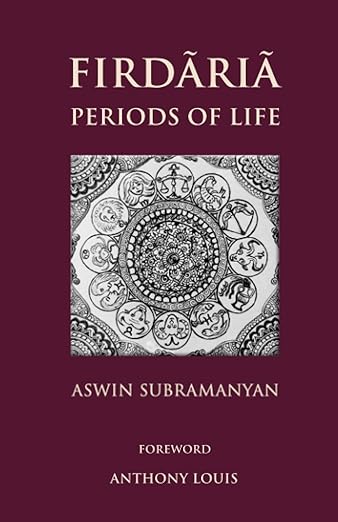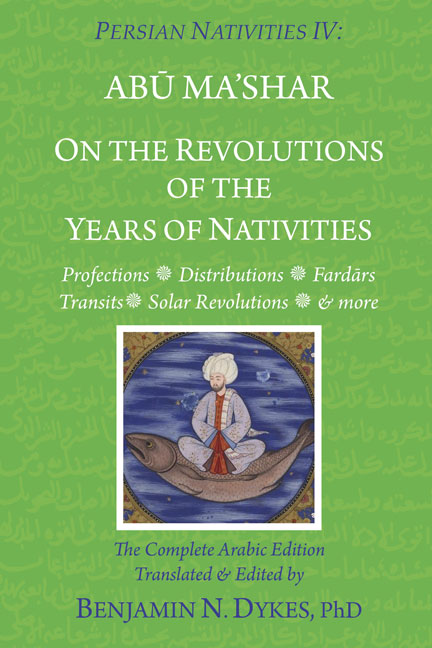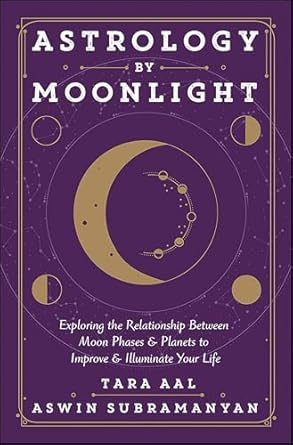Talk – https://talk.vonabisw.de/Astrologen3/Aswin.mp4
Bitchute – https://www.bitchute.com/channel/RLNyT9ETWzwa
Rumble – https://rumble.com/c/c-496224?e9s=src_v1_cbl
Odysee – https://odysee.com/@BTGH:4
Youtube – https://www.youtube.com/@astrotalk-traditionelleast5306/videos
*****
In Memory of my Master – https://www.theabverdict.com/post/in-memory-of-my-master
*****
Towards a Post-Modern Astrology – by Robert Hand
at the Astrological Conference 2005 of the British Astrological Association in York, UK. – https://www.astro.com/astrology/in_postmodern_h.htm
*****
Homepage – https://www.theabverdict.com – https://www.theabverdict.com/courses
Vita – https://www.theabverdict.com/about?utm_source=chatgpt.com
Books – https://www.theabverdict.com/books

and also

*****
Youtube Channel Aswin’s Astrology – https://www.youtube.com/@theabverdict/videos
The Joli-Aswin Show – https://thejashowspot.podbean.com/?utm_source=chatgpt.com
Astrotalk Filmliste – https://www.youtube.com/playlist?list=PLCKPz4q3EX-uur5DfW-jrx7jP5WtIkHZz
Facebook – https://www.facebook.com/TheABVerdict – https://www.facebook.com/ashwin.balaji.56

*****
Misunderstanding Triplicity? – Prof. Dr. Martin Gansten – Origins of the Tājika System of Astrological Aspects and Dignities – https://www.researchgate.net/publication/327331894_Origins_of_the_Tajika_System_of_Astrological_Aspects_and_Dignities – https://talk.vonabisw.de/Astrotalk3/Dignities.pdf
Prof. Dr. Martin Gansten – The Jewel of Annual Astrology – A Parallel Sanskrit-English Critical Edition of Balabhadra’s Hāyanaratna – https://brill.com/display/title/57015?srsltid=AfmBOopHxnCEZDSRSgMinWMRG4fann87o4QvgB1KmnJ3GiBVN4gvWZ_4 -Tajika – https://talk.vonabisw.de/Astrotalk3/Tajika.pdf
Prof. Dr. Martin Gansten – Sahl and the Tājika Yogas: Indian transformations of Arabic astrology –https://2024.sci-hub.ru/2105/3ad2e03bb9ae7a0bcb6422b77c276f69/10.1080@00033790.2010.533349.pdf – https://talk.vonabisw.de/Astrotalk3/Sahl.pdf
Das Buch „Jyotisa. Das System der indischen Astrologie“ von Hans-Georg Türstig
Türstigs Buch über das System der indischen Astrologie ist eine umfassende wissenschaftliche Darstellung, die Jyotiṣa nicht als moderne esoterische Praxis beschreibt, sondern als historisch gewachsene Disziplin innerhalb der klassischen indischen Wissenskultur. Der Autor arbeitet als Indologe und untersucht das gesamte astrologische System in seiner ursprünglichen Form, wie es in alten Texten und philosophischen Traditionen verankert ist. Im Zentrum steht das Verständnis, dass Jyotiṣa ursprünglich zu den Vedāṅgas gehörte und damit eine Funktion im rituellen und zeitbestimmenden Kontext der Veden hatte. Die frühe Aufgabe dieses Wissensbereichs bestand darin, die zeitlichen Grundlagen für Opferhandlungen, Kalenderstruktur und kosmische Ordnung zu liefern. Erst später entwickelte sich daraus das umfassende astrologische System, das heute bekannt ist.
Palmblattlesung
Thomas Ritter – https://www.youtube.com/@thomasritter1811/videos – https://www.thomas-ritter-reisen.de
Baboo Sundaram, Palmblattleser in Chennai – traditionellste Palmblattbibliothek in Südindien, die ca. 1.200 Jahre alt ist.
Patterns of Destiny by Martin Gansten – https://pdfcoffee.com/patterns-of-destiny-martin-gansten-pdf-free.html – https://talk.vonabisw.de/Astrotalk3/Patterns.pdf – Ein Nadi-Reader ist ein traditioneller indischer Astrologe, der mit den sogenannten Nadi-Palmblatttexten arbeitet. Diese Texte gelten in Südindien – vor allem in Tamil Nadu – als uralte Sammlungen individueller Lebensbeschreibungen, die angeblich von weisen Rishis in einer visionären Schau aufgezeichnet wurden. Die Aufgabe eines Nadi-Readers besteht darin, anhand des Daumenabdrucks die passende Palmblattrolle zu finden, in der das Schicksal der jeweiligen Person beschrieben sein soll. Sobald das richtige Bündel identifiziert ist, liest der Reader Zeile für Zeile aus dem Tamil-Original vor und übersetzt es. Darin stehen häufig Angaben zu Geburtshintergrund, Charakter, karmischer Herkunft und den kommenden Lebensphasen, oft verbunden mit typischen südindischen Remedien wie Mantra-Wiederholungen, Tempelritualen oder bestimmten Spendenhandlungen.
*****
Aswin Subramanyan is a contemporary astrologer originally from Chennai, India. Raised in a family with a deep astrological lineage, his fascination with Jyotisa — Vedic astrology — was almost predestined. He studied formally in this tradition from 2011, even as he worked a corporate career. He holds a Bachelor of Commerce (2009), an MBA in Finance (2011), and an M.A. in Labour Management (2018). In May 2025, he left the finance world to become a full‑time astrologer.
Astrologically, Aswin’s work is notable for its synthesis of three ancient traditions: Vedic (Jyotisa), Hellenistic, and medieval Persian astrology. He began expanding beyond his Jyotisa roots around 2017, drawn particularly to the philosophies and predictive systems of Hellenistic and Persian astrology. His practice today reflects a thoughtful integration of all three, rather than a superficial blending — he deeply studies their texts, techniques, and philosophical foundations.
In terms of formal qualifications, Aswin holds a Diploma in Traditional Natal Predictive Astrology, which he earned via Sharon Knight’s school. – https://astrologersharon.co.uk/learning-astrology
Yoga Samskrutam University
Yoga – Samskrutham University is an American Institution of Higher Education in the areas of Yoga, Samskrutham and Languages. The University is incorporated at Florida, USA.
https://www.ysam.org/about.html?utm_source=chatgpt.com
Aswin Subramanyan has an M.A. in Indian Astrology from Yoga Samskrutam University – The M.A. in Indian Astrology at Yoga‑Samskrutam University, officially called the M.A. in Vedanga Jyotisha, is a two-year program designed to teach Vedic astrology not merely as a system of prediction but as a spiritual practice integrated with the Vedic tradition. The program is offered primarily in distance mode, supplemented by some contact classes, and instruction is available in English and Telugu. Eligibility for the program requires a bachelor’s degree in Vedanga Jyotisha or a diploma in astrology, while those with significant practical experience may also be considered. The curriculum covers a wide range of topics, including the history of astrology, chart construction, Panchanga, Nadi astrology, horary astrology, medical astrology, mundane astrology, and predictive techniques, all framed within the philosophical context of Applied Yogas. The university emphasizes the integration of astrology with Vedic knowledge, viewing the practice as a service to social and spiritual well-being and as part of a holistic approach to total wellness. YSU is authorized by the Florida Commission for Independent Education to award degrees, but its M.A. carries a religious or Vedic designation, which means it is not directly equivalent to a secular academic M.A. and may require careful consideration for recognition or credit transfer to other institutions. The program is considered affordable and accessible to international students, offering both practical skills and a deep grounding in classical Vedic astrology, though students should be aware that career outcomes depend heavily on local acceptance and the demand for astrology-based counseling or spiritual services.
PhD in Astrology
Aswin Subramanyan is currently working toward a PhD in Astrology.
Beyond his personal practice, Aswin is very active in the astrological community: he is a council member of the Association for Professional Astrologers International (APAI) and serves as the editor of their journal, The APAI Chronycle. He also teaches, as a faculty member of Kepler College, and runs his own school — the Cosmic Lineage Academy — where he teaches a Diploma in Indian Astrology.
As an author, Aswin has made significant contributions. His book Firdaria – Periods of Life examines the ancient Persian time‑lord technique known as Firdaria (“fardars”), reworking its calculation methods in important ways. In this work, he even includes the lunar nodes (Rahu & Ketu) in sub‑period rulership, which is a modification from some classical treatments. He also co-authored Astrology by Moonlight (with Tara Aal), a book that explores the synodic (phasial) relationships between the Moon and other planets, combining insights from both eastern (Jyotisa) and western traditions.
Philosophically, Aswin draws inspiration from ancient Greek thinkers (like Aristotle and Stoic philosophy), as well as from Indian spiritual texts such as the Upanishads and Bhagavad Gita. He views astrology not just as a forecasting tool, but as a “cosmic language”: something deeply meaningful, capable of helping people find direction, purpose, and ethical insight in life.
He is also a public speaker and educator: he gives lectures internationally, leads webinars (for instance on the philosophical foundations of Hellenistic astrology), and publishes regularly on his blog and via a Substack newsletter. He also co-hosts a podcast called The Joli‑Aswin Show. Lianne McCafferty, Author & Astrologer
In the conference circuit, Aswin has appeared as a speaker at major astrology events. For example, at the 14th International Astrology Days Conference, his bio highlights his 350‑year maternal astrological lineage, his integrative practice, and his role as editor and teacher. astrolojiokulu.com
Aswin’s work is valued because it revives and evolves traditional techniques in a way that is both respectful to older wisdom and relevant to modern seekers. His cross-traditional approach, scholarly rigor, and philosophical depth make him a significant figure in contemporary traditional astrology.
*****
He places strong emphasis on Firdaria, the ancient Persian “time-lord” system, which divides life into planetary periods and sub-periods. Unlike many modern treatments, Aswin incorporates the lunar nodes (Rahu and Ketu) into these calculations, giving a more nuanced view of karmic and life-cycle timing. This approach allows for precise long-term forecasting, and he often demonstrates its predictive power with historical and contemporary examples.
Another cornerstone of his work is the integration of Hellenistic astrology with Jyotisa. He studies techniques such as annual profections, zodiacal releasing, and doryphory (spears of influence around a planet), showing how these can complement traditional Vedic predictive methods. He emphasizes the philosophical foundations of these techniques, not just the mechanics, explaining why certain planets act as “time-lords” or exert particular influences at specific life stages.
Aswin also works with planetary synodic cycles and the Moon’s phases, teaching how these rhythms affect human behavior and decision-making. In Astrology by Moonlight, he demonstrates how combining lunar phase insights with planetary aspects and Nakshatra positions can enhance personal timing and event planning.
His teaching philosophy is integrative and scholarly: he encourages students to study original sources, cross-reference Indian, Hellenistic, and Persian texts, and understand astrology as a symbolic language. He stresses the ethical and philosophical dimensions of astrology, framing it as a guide for meaningful life choices rather than mere fortune-telling.
In practical terms, Aswin often illustrates predictive methods through case studies, showing how Firdaria periods, profections, and doryphory patterns manifest in personal and historical events. His approach is notable for balancing rigorous traditional methods with modern clarity, making complex predictive techniques accessible without diluting their depth.
****************************
Copyright
Volker H. Schendel only has the right to publish the respective conversation uncut and unedited on freely accessible video platforms (i.e. no paywalls) and on his homepages. – My guest has the right to shorten, edit or add to the mp4 file, which I will send to him via Swisstransfer or Wetransfer, as he wishes and to publish it on his websites and video-platforms according to his liking
History of India
The history of India stretches back hundreds of thousands of years, with evidence of human habitation on the subcontinent dating to approximately 250,000 BCE. Early Homo sapiens and their predecessors occupied various regions, leaving behind stone tools, cave paintings, and other artifacts that provide insight into prehistoric life. These early humans were primarily hunter-gatherers, gradually developing strategies for survival, including the use of fire, simple shelters, and cooperative hunting techniques.
By around 7000–6000 BCE, Neolithic communities began to form, particularly in the northwestern regions of the subcontinent. These communities practiced early agriculture, domesticated animals, and established permanent settlements. Pottery, polished stone tools, and rudimentary irrigation systems reflect the growing sophistication of these societies.
Between 3300 and 1300 BCE, the Indus Valley Civilization emerged in what is today Pakistan and northwest India. This Bronze Age civilization is notable for its well-planned cities, standardized weights and measures, advanced drainage systems, and extensive trade networks. The Indus people developed writing, though it remains undeciphered, and produced a rich material culture including seals, beads, and terracotta figurines.
From approximately 2000 to 1500 BCE, the early Vedic culture gradually developed in northern India, emerging from the cultural milieu left by the Indus Civilization. Social, religious, and economic structures evolved, including pastoralism, agriculture, and ritual practices documented in the Vedas. Sanskrit emerged as the primary language of liturgy and literature. These developments reflect a continuous internal evolution influenced by regional exchanges and gradual migrations rather than large-scale invasions.
By the 6th to 4th centuries BCE, northern India saw the rise of significant political entities such as the Mahajanapadas, and major religious and philosophical movements including Jainism and Buddhism. The Maurya Empire (322–185 BCE) later unified much of northern India under rulers such as Chandragupta Maurya and Ashoka, who promoted administrative efficiency, trade, and in Ashoka’s case, the spread of Buddhism.
*****
Following the Maurya Empire, India entered a period of regional kingdoms and cultural flourishing. The post-Mauryan era saw the rise of the Shunga and Kanva dynasties in the north, while in the south, powerful kingdoms such as the Satavahanas and Cheras, Cholas, and Pandyas consolidated their influence. This period was marked by significant developments in art, architecture, and trade, both inland and across the Indian Ocean. Buddhism and Jainism continued to spread, influencing cultural and philosophical life across South and Southeast Asia.
From roughly 320 to 550 CE, the Gupta Empire established political stability and ushered in what is often called the “Golden Age” of India. Under Gupta rule, mathematics, astronomy, literature, and art flourished. Classical Sanskrit literature reached its height, with works such as the plays of Kalidasa, while scientific achievements included advances in astronomy and the concept of zero in mathematics. Hinduism became increasingly codified, temples expanded, and devotional practices evolved.
After the decline of the Guptas, northern India fragmented into regional kingdoms, while southern India saw the rise of the Pallavas, Chalukyas, and later the Cholas. These southern kingdoms developed sophisticated administration, maritime trade networks, and monumental temple architecture. By the 8th century CE, Indian cultural influence had extended into Southeast Asia through trade, migration, and religion, with Indianized states such as Srivijaya and the Khmer Empire adopting aspects of Indian governance, religion, and art.
From the 8th century onward, northern India experienced a series of Islamic incursions that culminated in the establishment of the Delhi Sultanate (1206–1526). The sultanate oversaw centralized administration, promoted trade, and facilitated cultural exchanges, including the introduction of Persian art, architecture, and literature. In parallel, southern kingdoms such as the Vijayanagar Empire preserved and advanced Hindu traditions, literature, and temple building.
The 16th century saw the rise of the Mughal Empire, which unified much of northern and central India. The Mughals, including rulers such as Akbar, Jahangir, Shah Jahan, and Aurangzeb, established a highly organized administration and a flourishing cultural milieu blending Persian, Islamic, and Indian traditions. Architecture, painting, music, and literature thrived, with monuments such as the Taj Mahal epitomizing Mughal artistic achievement. The Mughal era also promoted trade, urban growth, and a complex system of governance that influenced later regional powers.
From the 16th century onward, European powers gradually arrived, including the Portuguese, Dutch, French, and British. The British East India Company gained increasing political and economic control, eventually leading to direct British colonial rule after the 1857 revolt, known as the Indian Rebellion or Sepoy Mutiny. Colonial rule brought infrastructural development, Western education, and administrative reforms but also economic exploitation and social disruption.
In the 20th century, India’s struggle for independence intensified under leaders such as Mahatma Gandhi, Jawaharlal Nehru, Subhas Chandra Bose, and many others. Mass movements, civil disobedience campaigns, and negotiations ultimately led to India gaining independence from Britain on August 15, 1947. The independence process was accompanied by the partition of India and Pakistan, resulting in large-scale population displacements and communal violence.
Since independence, India has evolved into the world’s largest democracy, with a diverse society comprising multiple religions, languages, and ethnicities. Politically, it has navigated challenges of economic development, social reform, and regional tensions, while culturally, it continues to integrate ancient traditions with modern innovations in science, technology, and the arts. Today, India remains a nation of immense historical depth, shaped by thousands of years of continuous cultural, social, and political evolution.
*****
History of Vedic astrology
Human engagement with the skies on the Indian subcontinent begins around 7000 BCE, during the Neolithic period. Early agrarian communities in the Indus-Gangetic plains observed the movement of the sun, moon, and stars to guide agriculture, animal husbandry, and seasonal cycles. Simple calendars and lunar observations structured daily life, linking cosmic patterns to human activity, ritual, and social organization. These observations laid the earliest foundations of what would eventually become Vedic astrology.
By the time of the Indus Valley Civilization (3300–1300 BCE), urban planning, architecture, and symbolic artifacts indicate a sophisticated interest in celestial alignments. Cities were carefully oriented, possibly with solstices and cardinal directions in mind, and seals and figurines bear motifs related to solar, lunar, and stellar phenomena. While there is no surviving written astrology from this period, these practices reflect an emerging awareness of cosmic order and its significance for human life.
From 2000 to 1500 BCE, the early Vedic period saw these observations coalesce into a structured system of knowledge. The Rigveda contains references to lunar months, solar movements, and timing of rituals according to celestial patterns. Nakshatras, or lunar mansions, were established to divide the sky into 27 (sometimes 28) segments, forming the core framework of Vedic astrology. Social, religious, and economic life increasingly depended on these celestial cycles, as rituals, festivals, and agricultural activities were timed in accordance with lunar and solar movements.
Between 1000 and 500 BCE, Vedic astrology developed further in parallel with astronomy. The Vedanga Jyotisha codified methods to calculate positions of the sun, moon, and planets and to determine auspicious timings for ceremonies and daily activities. Astrology became closely integrated with philosophy, medicine, and ritual, reflecting a worldview in which celestial rhythms mirrored human destiny and society.
From 500 BCE to 500 CE, the classical texts of Vedic astrology emerged. Scholars such as Parashara, Garga, and Varahamihira wrote foundational works, including the Brihat Parashara Hora Shastra and Brihat Samhita, codifying predictive techniques, planetary influences, dashas (planetary periods), yogas (planetary combinations), and chart interpretations. Astrology was central to political life, guiding rulers in administration, warfare, and governance, while also informing religious and domestic rituals.
During the Gupta period (320–550 CE), astrology became highly systematized and precise. Mathematical astronomy enabled accurate calculations of planetary positions and timings, essential for governance, temple rituals, agriculture, and personal guidance. Predictive techniques and divisional charts (vargas) were refined, demonstrating a sophisticated understanding of celestial mechanics.
The medieval period saw further evolution of Vedic astrology under regional kingdoms and in contact with Islamic, Persian, and Central Asian astronomical knowledge. Techniques such as Vimshottari dasha, electional astrology, and intricate yogas were elaborated, while astrology remained a crucial tool in societal, political, and religious life, influencing marriage, city planning, temple construction, and medical practices.
During the colonial era, Western astronomy and scientific methods were introduced, yet traditional Vedic astrology persisted. Texts were edited, printed, and widely disseminated, preserving centuries of accumulated knowledge. Modern practitioners now combine computer-aided calculations with traditional methods, but the core principles—nakshatras, rashis, planetary positions, dashas, and yogas—remain unchanged.
In contemporary India, Vedic astrology continues to play a significant role in cultural and social life, consulted for naming ceremonies, marriage compatibility, career guidance, financial decisions, and health matters. Its development from Neolithic sky observations, through the urban sophistication of the Indus Valley, the codification of the Vedic period, classical and medieval refinements, and modern integration with technology, represents a continuous tradition spanning over 9,000 years. It embodies humanity’s enduring fascination with the cosmos and its belief in the profound connection between celestial rhythms and human destiny.
This narrative parallels the history of India itself, showing how astrology evolved in step with broader cultural, social, and political developments, creating a living system that has persisted for millennia.
*****
The oldest known text of Indian astrology is the Vedāṅga Jyotiṣa, part of the Vedāṅga literature, which served as auxiliary disciplines to the Vedas (the ritual texts of ancient India). Traditionally, it is attributed to Lagadha and is believed to have been composed between 1200 BCE and 700 BCE, though some scholars place it more cautiously around 1000 BCE.
The Vedāṅga Jyotiṣa is primarily a practical astronomical-astrological manual. It describes the cycles of the Sun and Moon, the calculation of days, months, and years, and the determination of ritual timings. It also introduces the system of Nakṣatras (lunar mansions), which later became a fundamental part of Indian horoscopy.
Unlike later astrological works that focus on individual horoscopes, the Vedāṅga Jyotiṣa is mostly calendaric and ritual-oriented. Its main purpose was to determine the correct times for sacrifices, ceremonies, and seasonal observances. The focus was on precise timekeeping rather than personal astrology.
From around 500 BCE to 200 CE, more developed texts appeared, introducing the full framework of classical Indian astrology. Among these, the Bṛhat Parāśara Horāśāstra became the cornerstone of classical horoscope astrology, detailing planetary influences, houses, aspects, and predictive techniques.
*****
chronological overview of the earliest Indian astrological texts and their main focuses, leading up to the classical Parāśara system:
- Vedāṅga Jyotiṣa (c. 1200–700 BCE)
Attributed to Lagadha, this is the oldest surviving Indian astrological-astronomical text. Its focus is on astronomical calculations for ritual timing. It describes the motions of the Sun and Moon, the calculation of days, months, and years, and introduces the Nakṣatras (lunar mansions). The text is practical and calendar-based rather than concerned with personal horoscopes. - Sūrya Siddhānta (early form c. 400 BCE–100 CE, revised later)
One of the earliest systematic works on mathematical astronomy, it provides precise rules for calculating planetary positions, eclipses, and time units. It is more technical and theoretical than the Vedāṅga Jyotiṣa but laid the foundation for planetary calculations used in astrology. - Yavanajātaka (c. 120 CE, translation/adaptation from Greek Hellenistic astrology)
The earliest known Hellenistic-influenced astrological text in India, attributed to Sphujidhvaja. It introduces the horoscope system (lagna/ascendant, signs, planets, houses) to Indian astrology. This marks the transition from purely calendaric astrology to natal and predictive astrology. - Bṛhat Jātaka by Varāhamihira (c. 505 CE)
A comprehensive classical text on astrology. It systematically describes planetary effects, house significations, aspects, combinations, and predictive techniques. Varāhamihira integrates both native Indian traditions and Hellenistic influences. - Bṛhat Parāśara Horāśāstra (c. 6th–7th century CE, compiled over time)
Attributed to Sage Parāśara, this text forms the foundation of classical Indian horoscope astrology (Jyotiṣa). It covers planetary influences, 12 houses, 27 Nakṣatras, dashas (timing periods), yogas (planetary combinations), and predictive methods for individual lives. This system is still the primary framework for modern Vedic astrology.
This progression shows the evolution of Indian astrology from ritual-based lunar-solar calculations in the Vedāṅga Jyotiṣa to the fully predictive natal astrology of the Parāśara system, integrating both indigenous observation and Hellenistic concepts.
*****
The development of the Vedic texts can be understood as a continuous, indigenous process spanning several centuries. The oldest Vedas, especially the Rigveda, emerged as collections of hymns that were initially transmitted orally. These hymns primarily focus on the worship of natural forces such as Agni, Indra, or Soma, and provide instructions for rituals and sacrifices that structured both social and religious life. These early texts reflect a local religious practice that gradually became more complex.
Over time, the Brāhmaṇas were composed, which commented on and systematized the ritual practices. They already show early philosophical reflections, for example, on the symbolic meaning of sacrifices or the cosmic order. In parallel, the Āraṇyakas developed, texts oriented more toward meditative and contemplative practice, forming a bridge to the Upaniṣads.
The Upaniṣads represent the culmination of this development. They move away from external ritual and focus on the inner questions of human existence: the nature of the self (Ātman), the ultimate principle (Brahman), the illusory nature of the world (Māyā), and the path to liberation (Mokṣa). They condense and systematize the philosophical knowledge that had evolved over centuries in the earlier Vedic texts.
Thus, the Vedic literature represents an unbroken, indigenous evolution: from the ritual hymns of the early Vedas, through the reflective Brāhmaṇas and Āraṇyakas, to the metaphysical Upaniṣads, which form the foundation of Vedānta. This shows that the philosophical depth of Vedānta did not emerge suddenly but grew out of a long, continuous tradition.
*****

